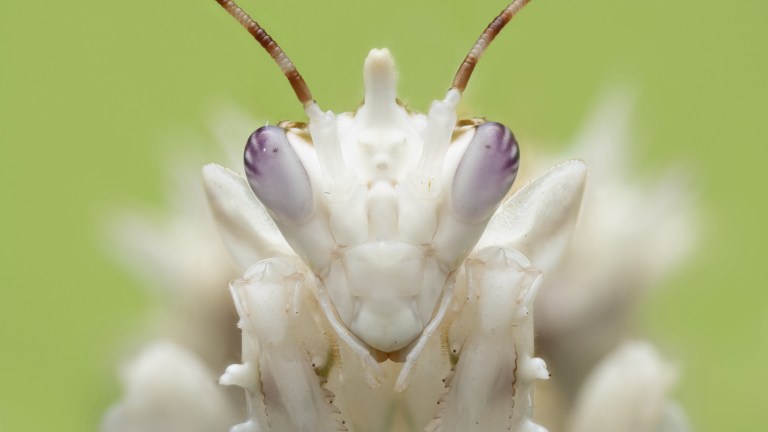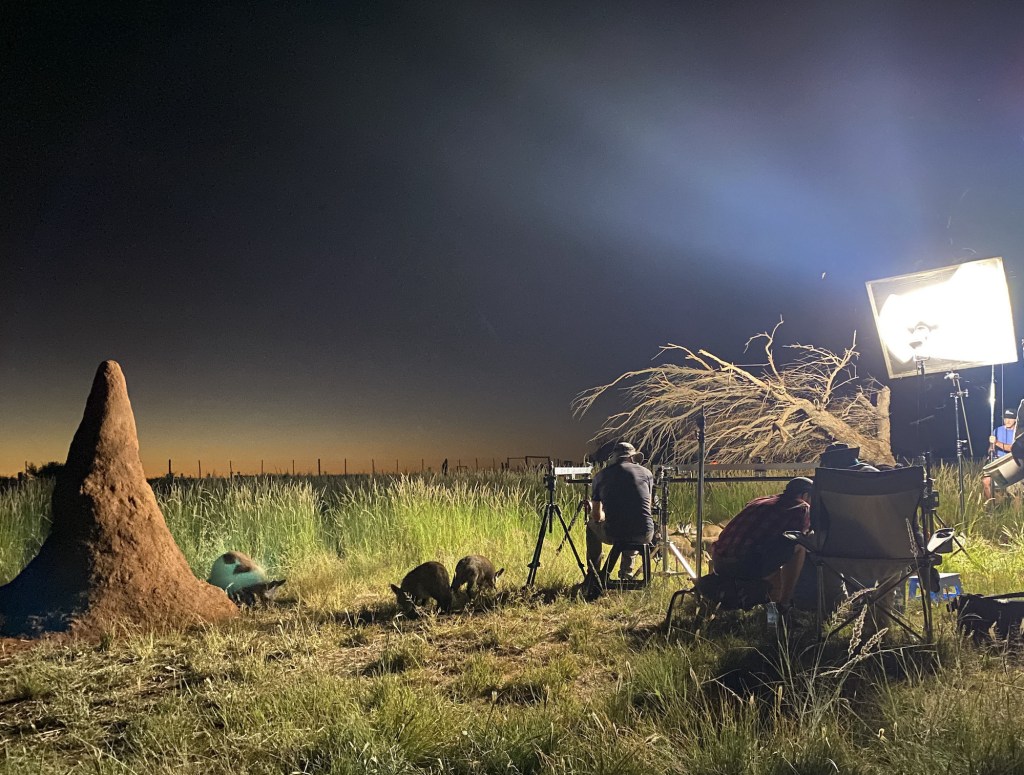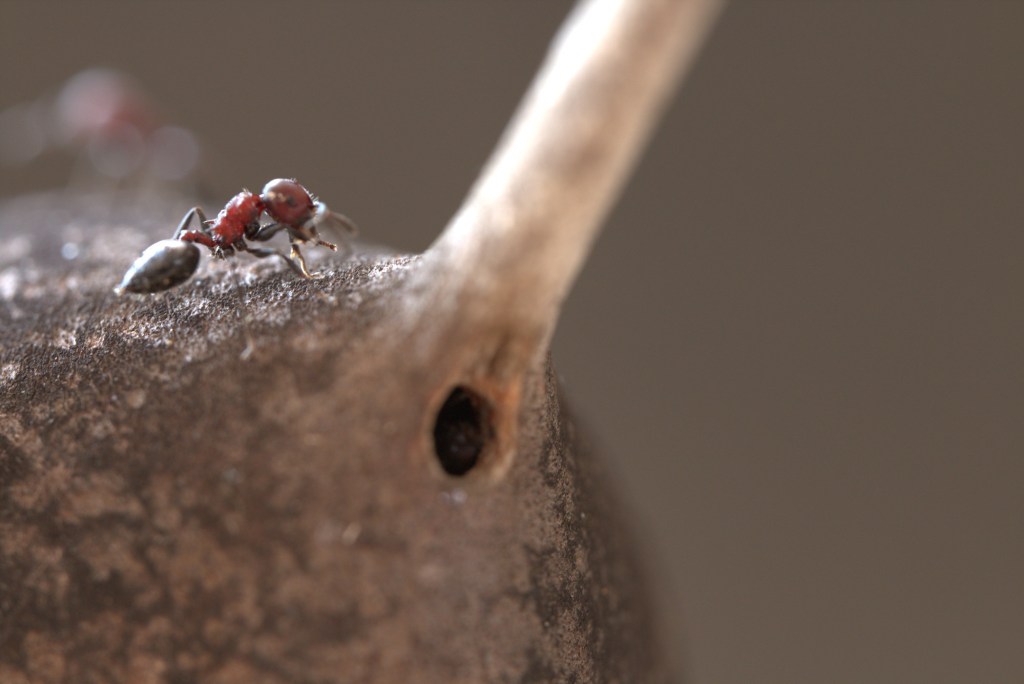A Real Bug’s Life Brings Pixar’s Sensibility To A Natural World Series
We ventured to the microscopic world to learn about the making of the new series from National Geographic inspired by the Pixar film A Bug’s Life.

They call it the “Big Five” — lions, elephants, buffaloes, leopards, and rhinos. And the moment you spot one of them on an African safari, especially for the first time, a sense of awe sneaks up on you. Your open-aired Jeep falls silent, minus the ruffling of hands searching for phone cameras or whispers to pass the binoculars. The scale of you, a measly person, against an elephant, an imposing yet majestic mammoth of a creature, puts the fragileness of life into perspective.
The bugs of the savanna, on the other hand, struggle to conjure a similar aura. Putting on bug spray before a safari is as essential as brushing your teeth. Failing to heed the warning to shut off your hotel room lights will lead to a dense accumulation of unwanted insects. Yet while in Tanzania, where National Geographic hosted Den of Geek and other members of the press for a unique junket opportunity, a slow appreciation for our insect brethren began to build.
To get there, we spent some time inside the micro-world to learn more about the new series A Real Bug’s Life from National Geographic, which is now streaming on Disney+. The new natural world show tells the stories of bugs from around the globe using the latest camera technology to bring audiences to ground level. After screening the savanna-set episode, our group of journalists interviewed the series’ executive producer Bill Markham to find out why they drew inspiration from the 1998 Pixar film. It all boiled down to one entry point: What if the beloved animation studio was to make a film about real bugs?
“It was a real goal to make it a family oriented series,” Markham tells us via Zoom. “The naturalists or fans of animal [series] have been very well-served over the years by fantastic programs. Bringing together National Geographic and Disney with Pixar meant we could tap into a new audience.”
The series flies from the African savanna to other episodes that look at the Costa Rican rainforest, a British farm, a Texas backyard, and into big city life where bugs live amongst the densest populations of humans. Part of landing the right tone was finding a narrator that could put their own spin on the material. They secured that in casting actor and comedian Awkwafina, whose star only continues to rise after the success of her Comedy Central series Awkwafina is Nora From Queens, an award-winning lead turn in A24’s critical darling The Farewell, and appearances in recent major studio releases, Marvel’s Shang-Chi and Renfield. “Using Awkwafina brought her own magic and own words to the read,” Markham says.
Nowhere is that more apparent than the series’ African-set episode, “Land of Giants,” that juxtaposes tiny creatures and their David vs. Goliath battles against the areas’ famed “Big Five.” That episode highlights the crux of the challenge for the filmmakers.
“People love a cuddly mammal with big eyes,” he says. “A lot of people overlook [bugs]. We focused on charismatic and engaging bugs that we could relate to. Really good stories and good drama. This was going to be our challenge. We knew Awkwafina would appeal to people and bring in a new audience.”

While hiking in the Ngorongoro Crater, I came across one of the show’s “characters” from the episode “Land of Giants” firsthand: a dung beetle in the finishing stages of neatly packing an impressively round ball of… poop. Normally the hike would have continued onwards, but I had gained a new appreciation for the dung beetle’s role in the wider ecosystem. They are nature’s little waste management experts.
“Bugs are thought of as cold-blooded and unsophisticated but [dung beetles] actually warm their wings up so they can use them more efficiently,” he says. “You’ve seen it yourselves. During a safari it can be freezing cold, which is surprising on your first trip to the savanna. But these dung beetles want to get ahead of the competition and get to the food first so they warm their wings up and they fly as fast as they can to breakfast.”
The “real” innovation behind A Real Bug’s Life is the series’ ability to utilize new camera technology to get viewers down to ant-level. In some instances, like a scene where acacia ants are working together to defend their territory against an elephant, the crew is using 45-degree lenses that enable them to point downwards towards the ants, and then upwards at their foes. “It was important to us to see the world as an ant would,” he says.

The series, which debuted with five episodes that are currently available to stream, took nearly three years to make from start to finish. Per episode, the crew spent anywhere between 100 and 200 days in the field. For their hard work, Markham hopes audiences come away with a new appreciation for bugs.
“Bugs clear up the mess. They’re pest control. They provide food to all sorts of other animals. It’s really important that the audience gets to love bugs and if they love bugs they’re going to help to look after bugs,” he says.”
“I hope there will be A Real Bug’s Life effect. I hope when people see these animals through this lens and get down to their level that it will widen people’s eyes to these creatures”
A Real Bug’s Life from National Geographic is now streaming on Disney+.
